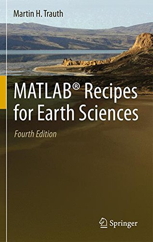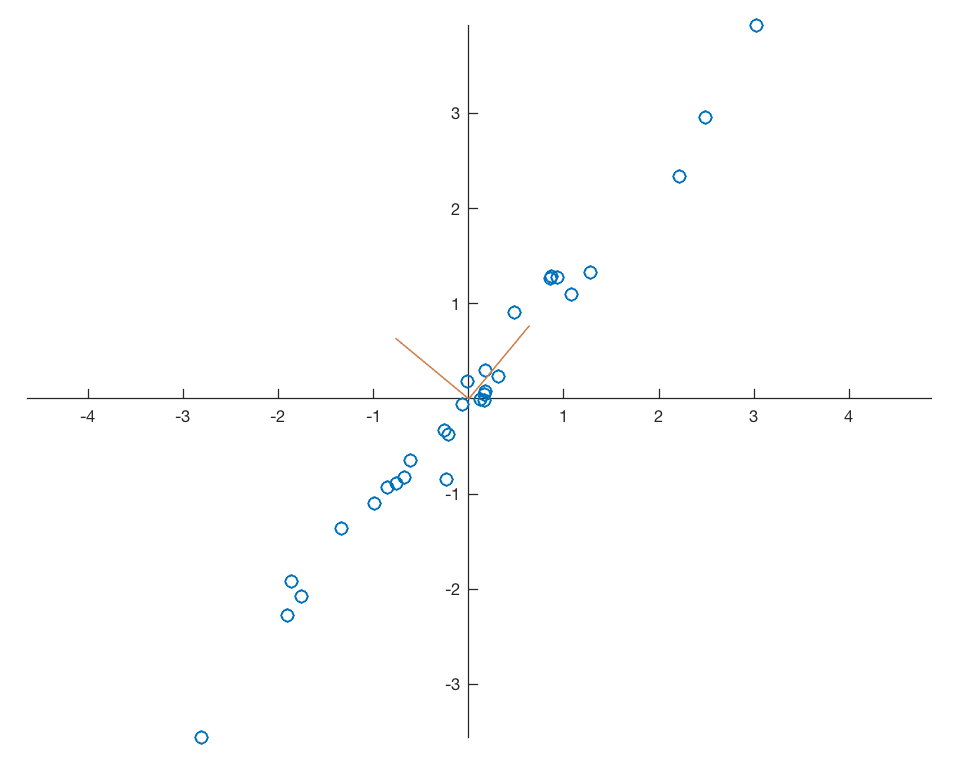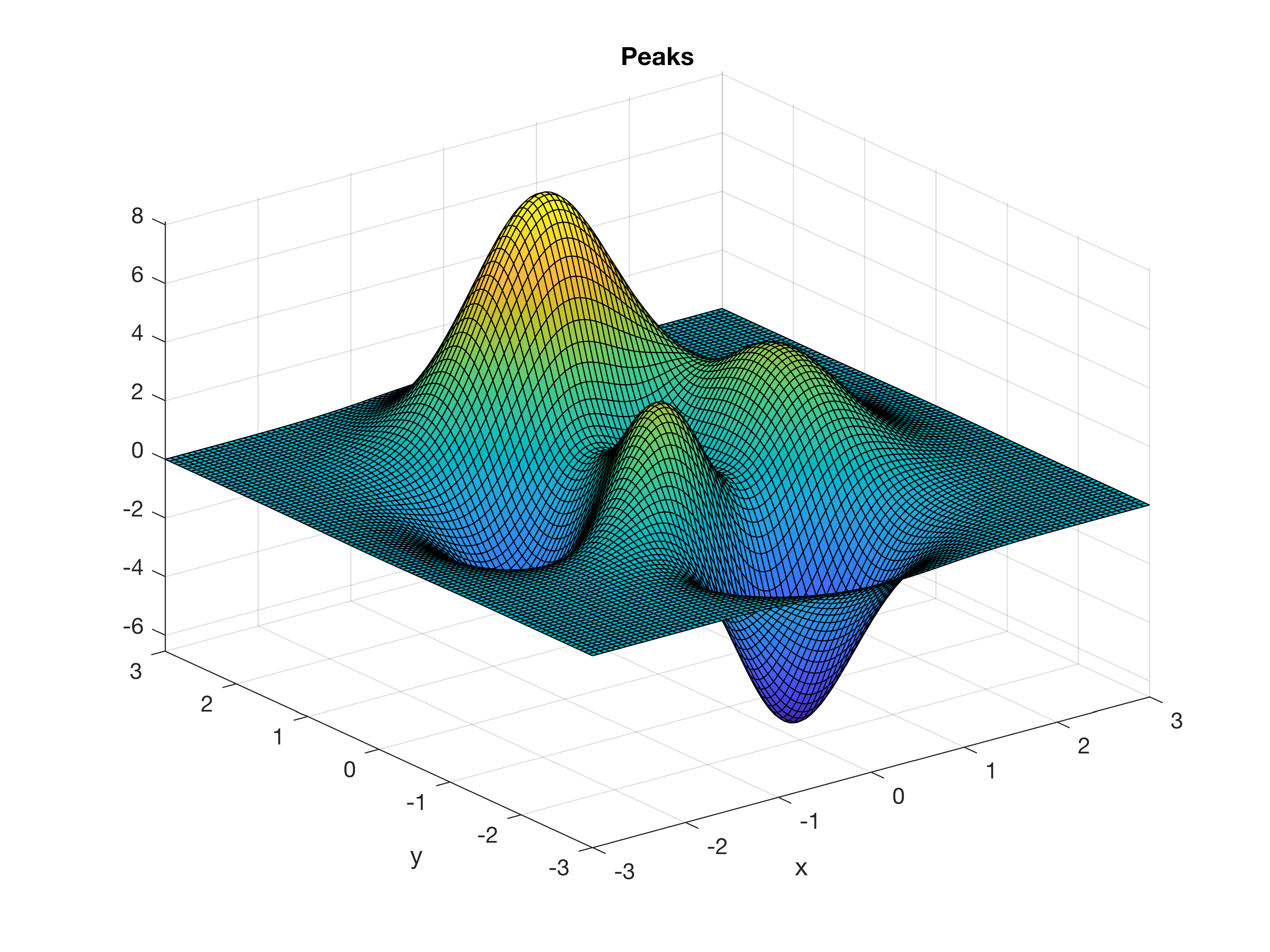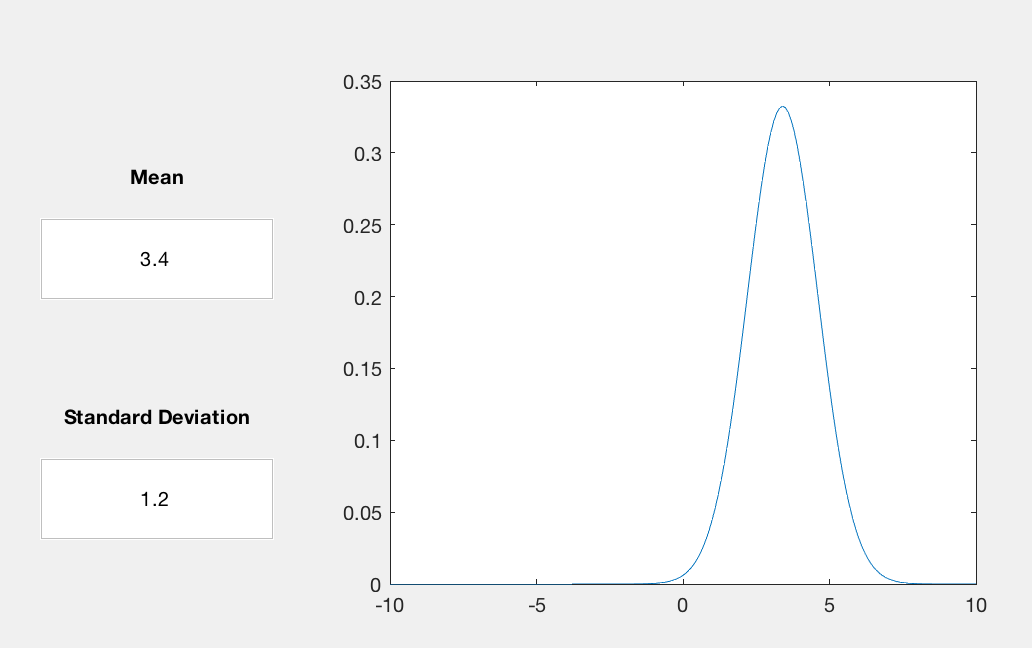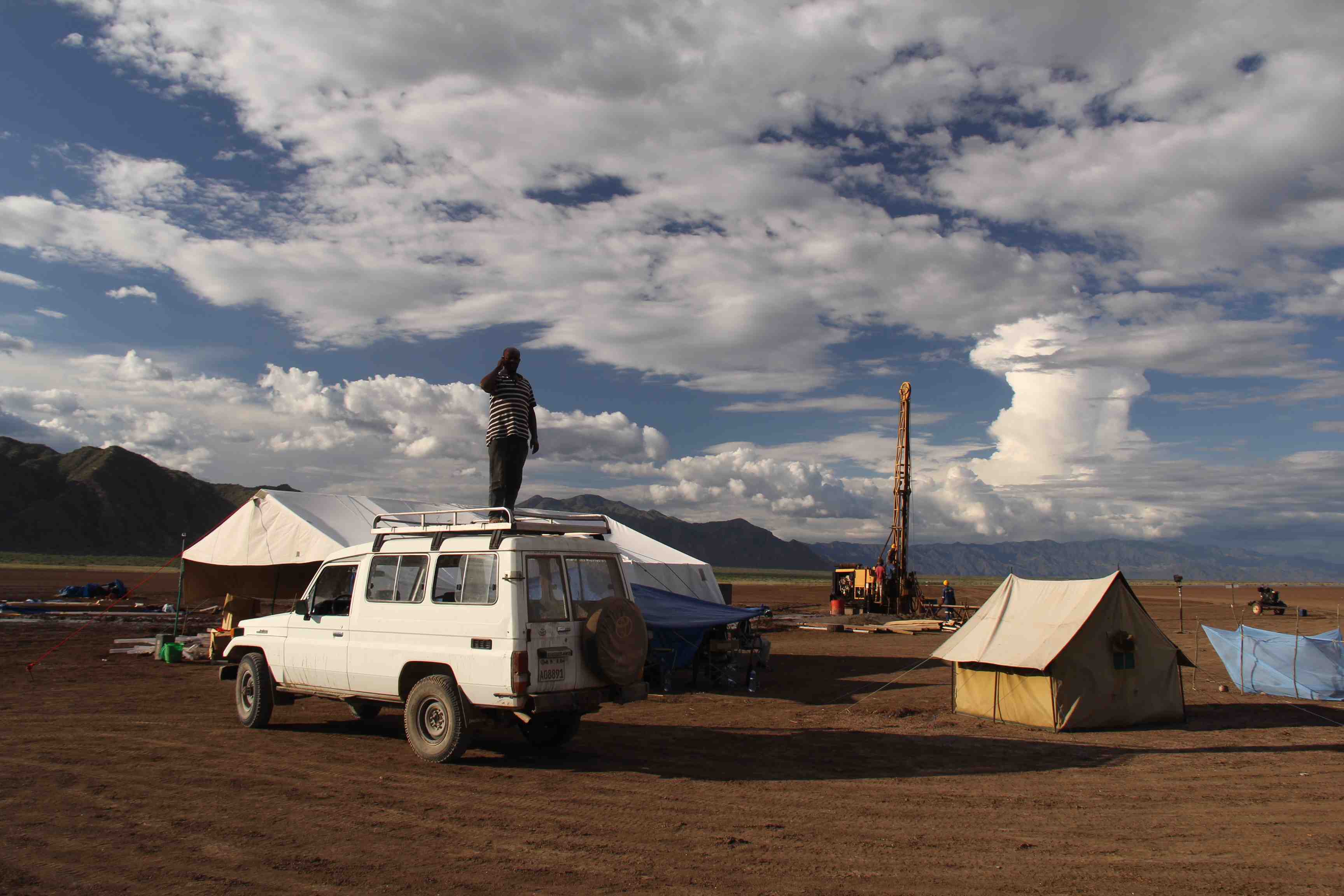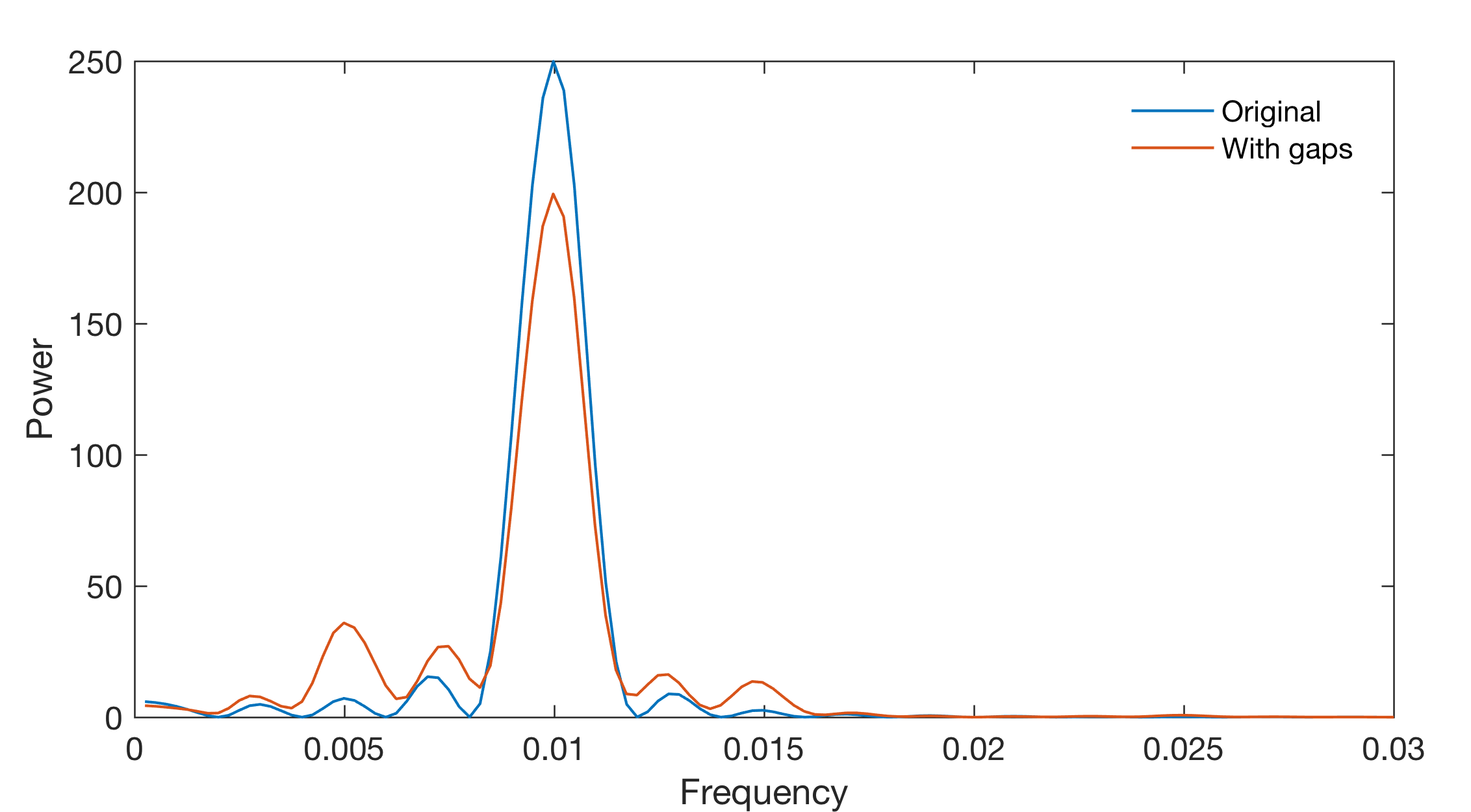The book “MATLAB Recipes for Earth Sciences” (Springer, 2015) is ranked 7th (August 2017) in the Top 100 out of more than 4,600 books in Earth Sciences, Geography & Environment of Springer. Thanks to all readers for buying the book!
Principal Component Analysis in 6 Steps
The Principal Component Analysis (PCA) is equivalent to fitting an n-dimensional ellipsoid to the data, where the eigenvectors of the covariance matrix of the data set are the axes of the ellipsoid. The eigenvalues represent the distribution of the variance among each of the eigenvectors. To understand the method, it is helpful to know something about matrix algebra, eigenvectors, and eigenvalues. Here is a n=2 dimensional example to perform a PCA without the use of the MATLAB function pca, but with the function of eig for the calculation of eigenvectors and eigenvalues. Continue reading “Principal Component Analysis in 6 Steps”
How to Become a Geoscience Data Analyst
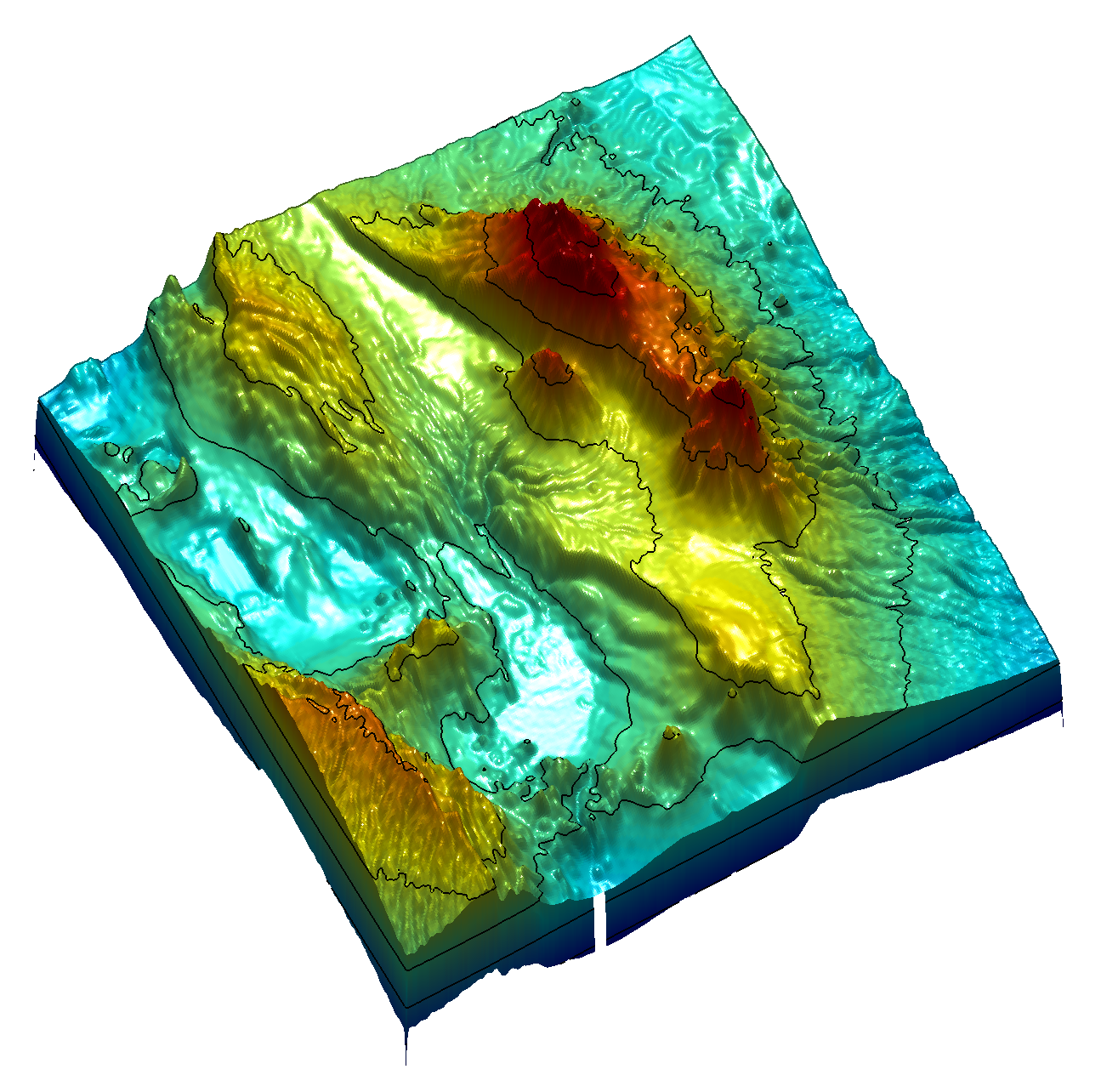 Working with quantitative data, which requires sophisticated mathematical and computer-assisted evaluation methods, came very late in the geological sciences, compared to other scientific disciplines. Unfortunately, in many geology courses worldwide university-level mathematics and computational geosciences is not included, as my experience – as the current chair of the examination committee of our geoscience masters program – from processing this year’s masters applications suggests. Continue reading “How to Become a Geoscience Data Analyst”
Working with quantitative data, which requires sophisticated mathematical and computer-assisted evaluation methods, came very late in the geological sciences, compared to other scientific disciplines. Unfortunately, in many geology courses worldwide university-level mathematics and computational geosciences is not included, as my experience – as the current chair of the examination committee of our geoscience masters program – from processing this year’s masters applications suggests. Continue reading “How to Become a Geoscience Data Analyst”
Using Colormaps with MATLAB
Colormaps are a graphical representation of data values as colors. MATLAB has a number of builtin colormaps. If you are tired of these there are several options to create and use alternative colormaps. Continue reading “Using Colormaps with MATLAB”
Speeding Up Your MATLAB Code and Using the Stopwatch Timer
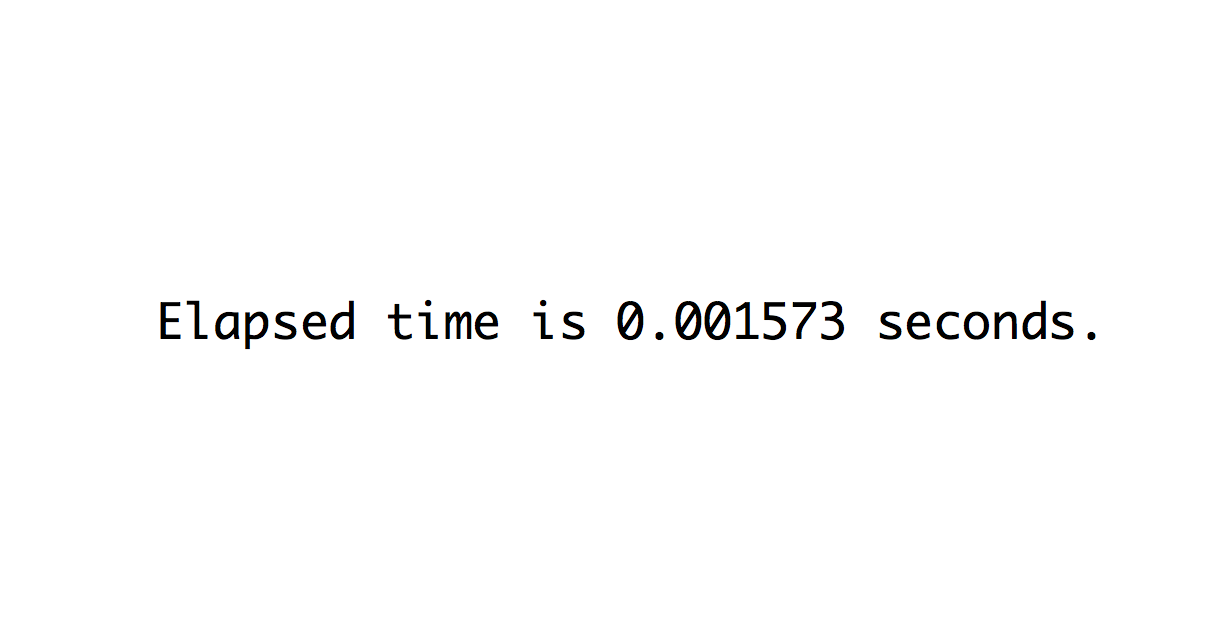 If your MATLAB script is too slow you may wish to find out in which part of the script the time is wasted. There are many ways to find the time consuming part of the script, for example the Profiler function Run and Time, but the simplest way is tic and toc to be included in a MATLAB script. Continue reading “Speeding Up Your MATLAB Code and Using the Stopwatch Timer”
If your MATLAB script is too slow you may wish to find out in which part of the script the time is wasted. There are many ways to find the time consuming part of the script, for example the Profiler function Run and Time, but the simplest way is tic and toc to be included in a MATLAB script. Continue reading “Speeding Up Your MATLAB Code and Using the Stopwatch Timer”
Creating Graphical User Interfaces with MATLAB in Ten Minutes
Creating Graphical User Interfaces (GUIs) with MATLAB is very easy and can be done either by coding the GUI entirely in the MATLAB Editor, by using the GUI Design Environment (GUIDE) or the new MATLAB App Designer. Here is an example for creating a GUI with GUIDE within ten minutes. Continue reading “Creating Graphical User Interfaces with MATLAB in Ten Minutes”
Public Lecture on Climate Change and Human Evolution at U Potsdam Children’s University
On September 29, 2017, the University of Potsdam will once again open its lecture halls for children to inspire them with the world of science. On this day, children can listen to interesting lectures, discuss with the scientists, and can experience exciting experiments. On Friday 29 September 2017 I will give a public lecture on tectonics, climate and human evolution for 8–10 year old children. Please visit the webpage of the children’s university to learn more about the event and how to register.
Data Voids and Spectral Analysis: Don’t Be Afraid Of Gaps!
During a workshop on time series analysis on paleoclimatic data, I was asked how data gaps affect the results of spectral analyzes. The good news is, the expected climatic cycles such as Milankovitch cycles do not shift when the time series has gaps. However, it is important that the data is properly pre-treated before being examined with a method of spectral analysis. Continue reading “Data Voids and Spectral Analysis: Don’t Be Afraid Of Gaps!”

